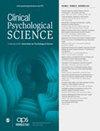刻板印象和强迫症症状表现:一种使用男性角色小片段的混合方法评估
IF 4.1
2区 医学
Q1 PSYCHIATRY
引用次数: 0
摘要
人们对强迫症(OCD)症状表现的刻板印象知之甚少。对强迫症病耻感进行了混合方法、多研究分析。在研究1 (N = 60)中,参与者在回答开放式问题之前先阅读五个小短文(对称/恰到好处、污染、性、伤害/侵略、谨慎的强迫症)中的一个。归纳性内容分析揭示了与焦虑相关的刻板印象(如:琐屑化)对对称/恰到好处和污染的刻板印象和严重的精神疾病刻板印象(如:危险)对伤害/攻击和性小插曲的刻板印象。在研究2 (N = 698)中,参与者在对耻辱感测量做出反应之前,先阅读七个小片段(强迫症症状表现、广泛性焦虑障碍、精神分裂症)中的一个。性、伤害/攻击和精神分裂症的小插曲与严重的精神疾病污名密切相关。谨慎的小插图与最焦虑相关的耻辱相关。总之,这些研究详细说明了强迫症症状表现中的刻板印象背书。减少耻辱感的干预措施应包括心理教育和解决宏观层面的刻板印象(即存在于各种症状表现中的刻板印象),同时增加接触机会以减轻耻辱感。本文章由计算机程序翻译,如有差异,请以英文原文为准。
Stereotypes and OCD-Symptom Presentations: A Mixed-Methods Evaluation Using Male-Character Vignettes
Stereotypes toward symptom presentations of obsessive compulsive disorder (OCD) are poorly understood. A mixed-methods, multistudy analysis of OCD stigma was conducted. In Study 1 ( N = 60), participants read one of five vignettes (symmetry/just right, contamination, sexual, harm/aggression, scrupulous OCD) before responding to open-ended questions. Inductive content analyses revealed anxiety-relevant stereotypes (e.g., trivialization) for symmetry/just right and contamination and serious mental-illness stereotypes (e.g., dangerous) for harm/aggression and sexual vignettes. In Study 2 ( N = 698), participants read one of seven vignettes (OCD-symptom presentations, generalized anxiety disorder, schizophrenia) before responding to stigma measures. The sexual, harm/aggression, and schizophrenia vignettes were strongly associated with serious mental-illness stigma. The scrupulous vignette was associated with the most anxiety-relevant stigma. Together, these studies detail stereotype endorsement across OCD-symptom presentations. Stigma-reduction interventions should include psychoeducation and address macro-level stereotypes (i.e., stereotypes that exist across symptom presentations) while enhancing opportunities for contact to mitigate stigma.
求助全文
通过发布文献求助,成功后即可免费获取论文全文。
去求助
来源期刊

Clinical Psychological Science
Psychology-Clinical Psychology
CiteScore
9.70
自引率
2.10%
发文量
35
期刊介绍:
The Association for Psychological Science’s journal, Clinical Psychological Science, emerges from this confluence to provide readers with the best, most innovative research in clinical psychological science, giving researchers of all stripes a home for their work and a place in which to communicate with a broad audience of both clinical and other scientists.
 求助内容:
求助内容: 应助结果提醒方式:
应助结果提醒方式:


